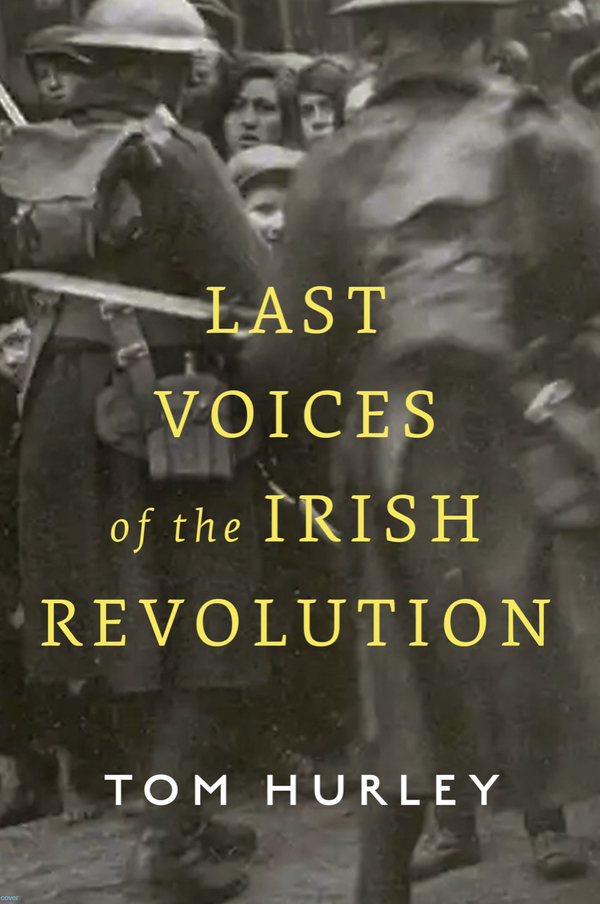Last Voices of the Irish Revolution by Tom Hurley is a record of the dwindling number of participants and witnesses to the Irish Civil War who survived well into the 20th century
IT HAS been called the war that should never have been, with Irish revolutionary soldiers who had recently fought together against the British for independence, turning on each other. The Irish Civil War erupted in 1922, a bitter conflict between pro-Treaty forces supporting the Anglo-Irish Treaty and anti-Treaty republicans opposing it.

The Treaty had established the Irish Free State but divided the nation over the terms of independence. The pro-Treaty forces, led by Michael Collins, sought a pragmatic compromise, while anti-Treaty republicans, including Eamon de Valera, rejected the compromise for a fully independent Irish Republic. The war lasted from June 1922 to May 1923, resulting in significant bloodshed and social divisions.
The pro-Treaty forces emerged victorious, but the conflict left a lasting impact on Ireland's political landscape and societal cohesion.
Eighty years on, author and documentary-maker Tom Hurley wondered if there were many civilians and combatants left from across Ireland who had experienced the years 1919 to 1923, their prelude and their aftermath. What memories had they, what were their stories and how did they reflect on those turbulent times?
In early 2003, he recorded the experiences of 18 people, conducting two further interviews in the United States in 2004. Tom spoke to a cross-section (Catholic, Protestant, unionist and nationalist) who were in their teens or early twenties during the Civil War.
The chronological approach he has taken to his book spans fifty years, beginning with the oldest interviewee's birth in 1899 and ending when the Free State became a Republic in 1949.
Among those Tom spoke to was John Parkinson, born in 1907, who grew up on the Grosvenor Road in Belfast. He recounts his memories of seeing the RMS Titanic on three occasions. He also remembers his father's membership of the UVF, the carnage of World War 1 as it was reported in the newspaper, his own membership of the Boys' Brigade, attending the opening of the Northern Ireland Parliament in 1921, tramcar attacks, riots, a neighbour who was shot in 1922, a 1932 soccer match in Dublin and his memories of Belfast during WW2.
One of the American interviews was conducted in New York with Limerick native William Geary, born in 1899, who had left Ireland in 1928. He discussed attending a wireless school in County Kerry, a year long voyage he took in 1920, joining the IRA in 1921, Black and Tans, joining An Garda Síochána in 1922, his postings, his controversial dismissal from the force in 1928, and subsequent emigration to America that same year. William died in 2004 after fighting a lengthy yet ultimately successful campaign to clear his name.
Other interviews include centenarians Kathleen Noonan née Charles from Cork who speaks about her involvement with Cumann na mBan (women's section of the IRA) while Anthony McGinley from Donegal and Dan Keating from Kerry discuss their activities as members of the IRA during the 1919-23 Troubles in Ireland. Patrick Greene from Longford, aged 102, attended college in Dublin in 1918 and later moved to West Cork where he befriended Ian Graeme Baun McKenzie-Kennedy from Scotland who was killed during the Civil War in 1922.
Many of the more prominent Irish politicians and military leaders of both a unionist and nationalist persuasion were brought to mind by the people the author spoke to. Seán Clancy, aged 101, who joined the Free State Army in 1922 encountered Michael Collins regularly.
Interviewees in Northern Ireland had memories of Edward Carson and James Craig while Éamon de Valera and Liam Lynch were two other personalities known to some of those interviewed down south. However there were also some surprising names which surfaced — perhaps none more so than that of Adolf Hitler whom one of the interviewees met while on a visit to Germany in 1935.
Most counties in Ireland are represented in the book and there is also a lot of detail pertaining to the British forces which occupied all of Ireland until 1922. Many of those encountered by the interviewees are named. There is also the story of one soldier who deserted the British army in 1920 and tried to join the IRA in Waterford.
One hundred years after the Civil War ended, these 20 interviews recorded by Tom Hurley come together to create a unique oral account of the revolutionary period and the tensions that were brewing in the run-up and aftermath. Together, theirs are the Last Voices of the Irish Revolution.
Last Voices of the Irish Revolution by Tom Hurley is available in bookshops across the island of Ireland and can also be ordered. It is published by Gill Books.

